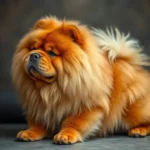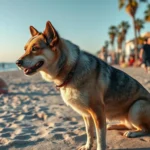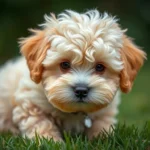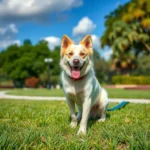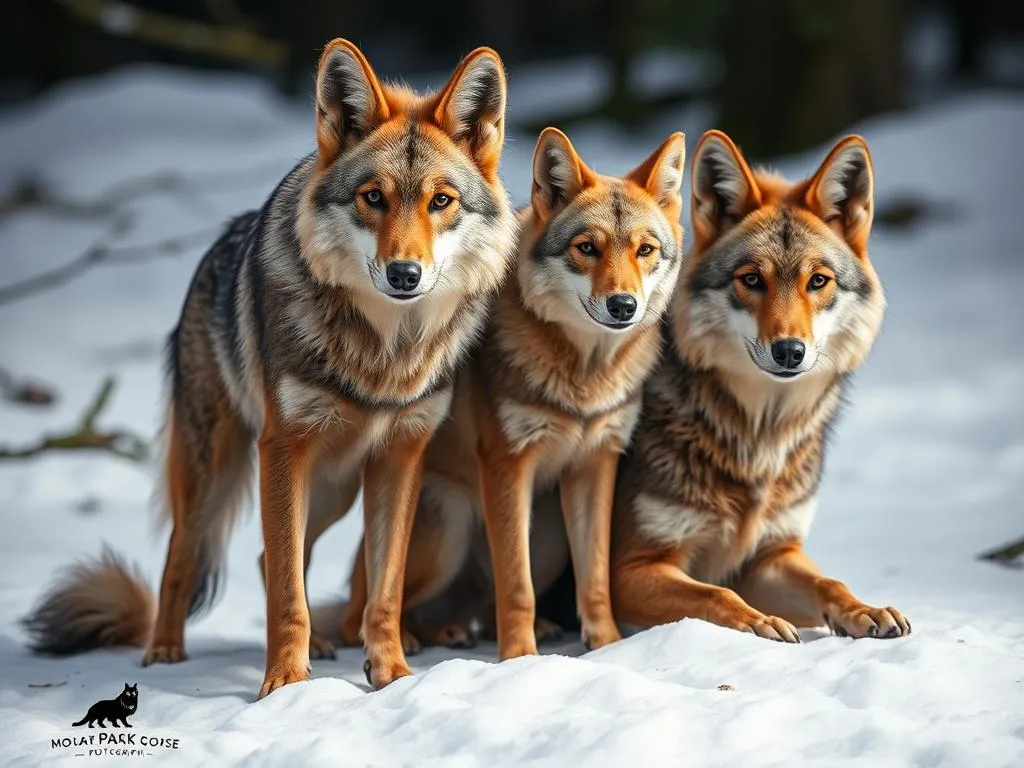
The allure of dogs that look like coyotes captivates many dog lovers and nature enthusiasts alike. These breeds often have striking features that echo the wild beauty of coyotes, leading to a deep fascination with their appearance and characteristics. Understanding these unique breeds not only satisfies our curiosity but also informs potential dog owners about the traits, needs, and behaviors associated with them.
Understanding Coyotes and Their Characteristics
What Are Coyotes?
Coyotes are wild canines native to North America. They thrive in diverse habitats, from deserts to forests and even urban areas. Averaging between 24 to 36 inches in height and weighing between 24 to 46 pounds, their size can vary significantly based on their environment. Their coats are typically a mix of gray, brown, and tan, which aids in camouflage. Coyotes are known for their adaptability, intelligence, and social structures, often living in small family groups.
The Coyote’s Role in Ecosystems
Coyotes play a crucial role in maintaining the balance of their ecosystems. As opportunistic predators, they help control populations of smaller mammals, which can prevent overgrazing and promote biodiversity. Culturally, coyotes hold significant symbolism in various Indigenous traditions, often representing adaptability, resourcefulness, and cunning.
Popular Dog Breeds That Resemble Coyotes
Overview of Dog Breeds That Look Like Coyotes
Several dog breeds share physical traits with coyotes, capturing the imagination of potential pet owners. These breeds typically exhibit a similar body structure, coat coloration, and facial features that evoke the essence of their wild counterparts. Below are some of the most popular breeds that resemble coyotes.
Alaskan Malamute
The Alaskan Malamute is a large and powerful breed originally bred for hauling heavy sleds in harsh Arctic conditions. They possess a thick, double coat that can range from gray and black to red and white. Weighing between 75 to 100 pounds, they are robust and muscular. Alaskan Malamutes are known for their friendly and gentle temperament, making them excellent family pets. However, they require regular exercise and mental challenges to keep them happy and healthy.
Canadian Eskimo Dog
Similar to the Alaskan Malamute, the Canadian Eskimo Dog has a rich history, having been used by Indigenous peoples for transportation and hunting. This breed features a thick, insulating coat, often in shades of gray, black, or brown. They are medium to large-sized dogs, weighing between 60 to 85 pounds. Their temperament is loyal and protective, making them great companions. Canadian Eskimo Dogs thrive in active households and require plenty of outdoor exercise.
Czechoslovakian Wolfdog
The Czechoslovakian Wolfdog is a fascinating breed, originally created by crossing German Shepherds with Carpathian wolves. This breed showcases a striking resemblance to coyotes, with its wolf-like appearance and athletic build. Weighing between 48 to 88 pounds, they have strong, lean bodies and dense fur that can vary in color. Czechoslovakian Wolfdogs are intelligent and energetic, requiring a firm and experienced handler to provide proper training and socialization.
Tamaskan Dog
The Tamaskan Dog is a relatively new breed that was developed to resemble wolves. With a solid, muscular build and a thick coat, they often display coloration similar to that of a coyote. Weighing between 55 to 100 pounds, Tamaskan Dogs are known for their friendly demeanor and adaptability. They require significant exercise and mental stimulation, making them ideal for active families.
Saarloos Wolfdog
The Saarloos Wolfdog is another breed that blends wolf and dog characteristics. Bred in the Netherlands by crossing German Shepherds with Eurasian wolves, these dogs have striking features reminiscent of coyotes. They are medium to large in size, typically weighing between 55 to 90 pounds. Their temperament is calm and reserved, yet they bond closely with their families. Proper training and socialization are essential for Saarloos Wolfdogs to thrive in home environments.
Factors That Contribute to Dog-Coyote Resemblance
Genetic Influences
The resemblance between certain dog breeds and coyotes can often be traced back to their genetic lineage. Many breeds, like the Czechoslovakian Wolfdog and the Saarloos Wolfdog, have direct wolf ancestry, which contributes to their physical characteristics. Selective breeding has also played a role in emphasizing these traits, resulting in dogs that look strikingly similar to coyotes.
Environmental Adaptations
Environmental factors can influence the appearance of dog breeds. For instance, dogs bred in colder climates may develop thicker coats and different coloration patterns to adapt to their surroundings. This can lead to a closer resemblance to coyotes, which also have coats adapted to their habitats.
Choosing a Dog That Looks Like a Coyote
Considerations Before Getting a Dog
Before deciding to bring home a dog that resembles a coyote, it’s essential to assess your lifestyle and living conditions. Many of these breeds require ample space to roam and play, so consider your home environment. Understanding the specific needs of each breed, including exercise requirements, grooming, and training, is critical to ensuring a harmonious relationship.
Where to Find These Breeds
When looking to adopt or purchase a dog that resembles a coyote, it’s crucial to choose reputable breeders or consider adopting from shelters. Research breeders thoroughly, ensuring they prioritize the health and temperament of their dogs. Additionally, many organizations help connect potential owners with breed-specific rescues, where you might find these unique breeds needing a loving home.
Cost of Ownership
Owning a dog that looks like a coyote involves various costs. Initial purchase or adoption fees can vary widely based on the breed and the source. Additionally, ongoing care expenses, including food, grooming, and veterinary care, should be factored into your budget. Be prepared for the financial commitment that comes with responsible pet ownership.
Caring for Dogs That Look Like Coyotes
Nutrition and Diet
Feeding a balanced diet is crucial for the health of your dog. Breeds that resemble coyotes often require high-quality dog food tailored to their specific needs, including weight management and energy levels. Consult with a veterinarian to determine the best dietary plan for your dog to ensure they remain healthy and active.
Exercise and Activity Levels
Most dogs that look like coyotes are energetic and require regular exercise. Engaging in activities like long walks, hiking, or playing fetch can help satisfy their physical needs. Mental stimulation is equally important; consider incorporating puzzle toys, obedience training, or agility exercises to keep their minds sharp.
Training and Socialization
Proper training and early socialization are essential for dogs that resemble coyotes. These breeds can be intelligent and independent, so establishing clear boundaries and commands is crucial. Positive reinforcement techniques work best, helping to build trust and a strong bond between you and your dog. Socialization with other dogs and people is also vital to ensure they develop a well-rounded temperament.
Common Misconceptions About Dog Breeds That Look Like Coyotes
Aggression and Temperament
One common misconception about dogs that look like coyotes is that they are inherently aggressive or wild. In reality, temperament varies significantly by breed and individual dog. With proper training and care, many of these breeds are affectionate and loyal companions. Understanding the specific needs and characteristics of each breed can help dispel myths about their behavior.
Legal and Safety Concerns
Potential owners may have concerns about the legality of owning certain breeds that resemble coyotes. It’s essential to research local regulations regarding breed ownership, as some areas have restrictions. Additionally, ensure your living environment is safe for both your dog and the surrounding community. Responsible pet ownership is vital, especially with breeds that may attract attention due to their appearance.
Conclusion
Exploring the world of dogs that look like coyotes reveals a fascinating variety of breeds, each with unique traits and characteristics. From the robust Alaskan Malamute to the striking Czechoslovakian Wolfdog, these breeds offer a blend of wild beauty and loyal companionship. By understanding their needs and behaviors, potential owners can make informed decisions about welcoming one of these remarkable dogs into their homes. The allure of these breeds lies not only in their appearance but also in the deep bond they can form with their families through responsible ownership and care.
FAQs
Are dogs that look like coyotes dangerous?
While there can be misconceptions about aggression, most dogs that resemble coyotes are not inherently dangerous. Their temperament largely depends on training and socialization. With proper care, they can be friendly and loving companions.
How do I know if a dog is a mix of coyote?
Physical traits such as elongated snouts, tall ears, and a lean body can indicate a coyote mix. Behavioral characteristics such as independence and a strong prey drive may also suggest a coyote lineage.
What is the best environment for a dog that looks like a coyote?
These breeds thrive in environments that allow for ample exercise and exploration. A spacious home with a secure yard is ideal, along with access to outdoor activities like hiking or running. Regular mental and physical stimulation is essential for their well-being.



